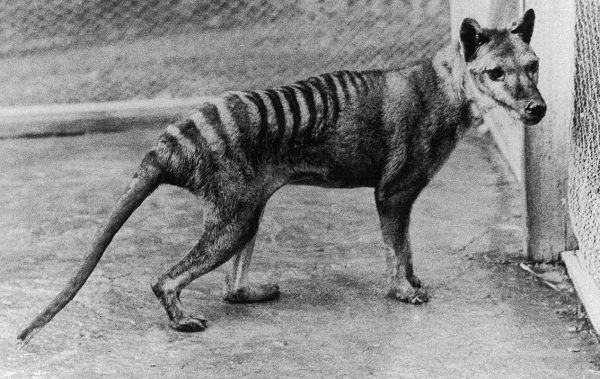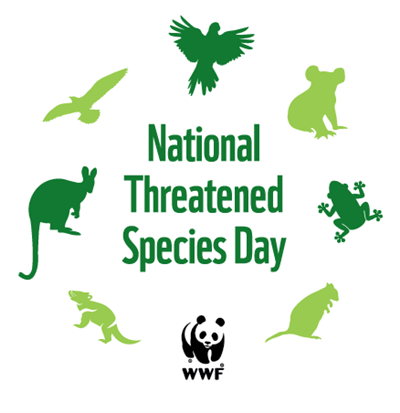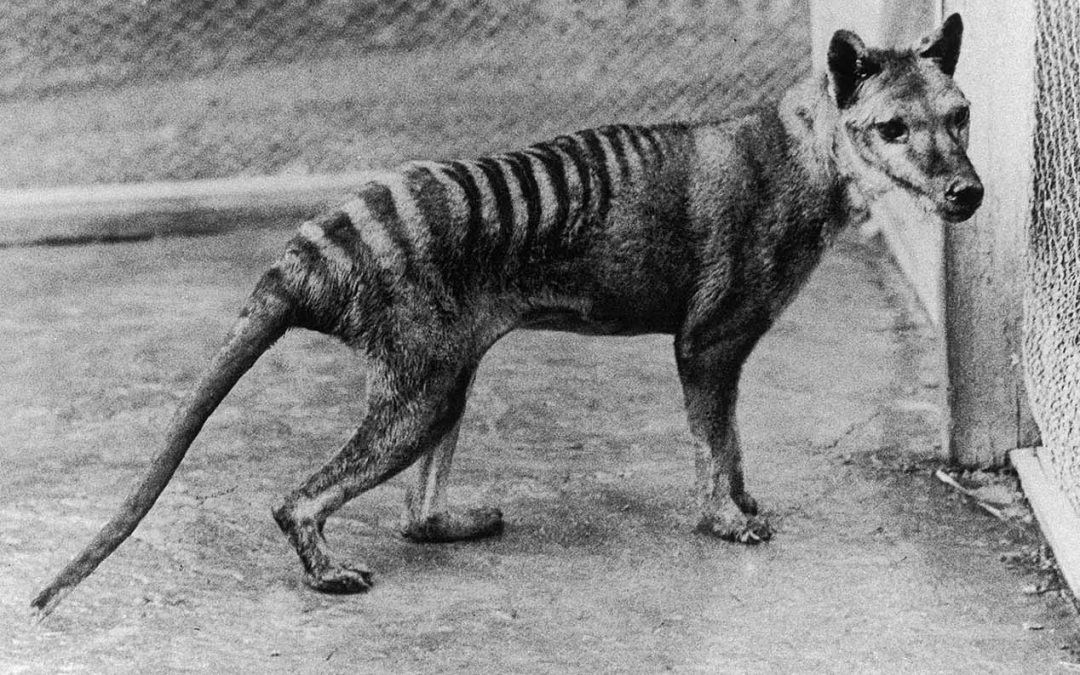Written by Elizabeth Heffernan, RAHS Intern

BENJAMIN, THE LAST THYLACINE, PHOTOGRAPHED CIRCA 1936 AT HOBART ZOO. IMAGE COURTESY TASMANIAN MUSEUM AND ART GALLERY.
On 7 September 1936, Benjamin, the world’s last known thylacine, died in captivity at Hobart Zoo from suspected neglect. Despite decades of a rapidly dwindling population, hastened by habitat destruction, disease, the incursion of introduced species, and human intervention, the species had only been declared protected two months prior. It would take fifty years before the thylacine—better known as the Tasmanian tiger after the distinctive stripes along its back—was pronounced officially extinct, in 1986. Ten years later, 7 September was declared National Threatened Species Day, to commemorate the last thylacine and raise awareness for other species facing a similar fate today.
The thylacine was once the world’s largest marsupial carnivore. That title is now held by its closest living relative, the Tasmanian devil—a species declared endangered in 2008. Characterised by its fifteen to twenty dark stripes from shoulder to tail, the Tasmanian tiger bore striking resemblance in head and figure to both dingoes and wolves, though was genetically related to neither. Scientists consider this an exceptional example of convergent evolution, in which unrelated species evolve similar physical features due to similar environmental factors.
There were an estimated five thousand thylacines in Tasmania/lutruwita at the time of European settlement. The species had previously gone locally extinct on the Australian mainland and Papua New Guinea, due in part to the introduction of the dingo approximately four thousand years ago.
Wild dogs, disease, and habitat destruction all played a part in the final demise of the thylacine, but it was hunting that signed their death warrant. Thylacines were deemed pests by local farmers, who wanted an easy scapegoat for the injury and death of their livestock—though wild dogs were likely more to blame. Bounties were set on both adult thylacines and their pups from as early as 1830 to as late as 1909. More than two thousand were collected, though it is likely more were killed. By the time zoos around the world sought their own Tasmanian tiger to display, it was too late. The wild population had been eradicated, and attempts to breed in captivity failed. The thylacine joined the more than ten percent of native Australian mammal species to go extinct since colonisation—the highest rate of mammal extinction in the world.
More than seventy percent of Australian native species are unique to our country. If they go extinct here, they go extinct everywhere. Over 518 native species are currently threatened in Australia. It is for these animals that National Threatened Species Day is held, to try and prevent another Benjamin, the last of his kind.
Visit World Wildlife Fund Australia for more information about how to help our endangered wildlife.

References:
‘Extinction of thylacine’, National Museum of Australia, accessed 30 July 2021, https://www.nma.gov.au/defining-moments/resources/extinction-of-thylacine.
Emily Hanna, ‘National Threatened Species Day’, Parliament of Australia, 5 September 2017, https://www.aph.gov.au/About_Parliament/Parliamentary_Departments/Parliamentary_Library/FlagPost/2017/September/National_Threatened_Species_Day.
Nerissa Hannink, ‘Secrets from Beyond Extinction: The Tasmanian Tiger’, Pursuit, University of Melbourne, 12 December 2017, https://pursuit.unimelb.edu.au/articles/secrets-from-beyond-extinction-the-tasmanian-tiger.
‘National Threatened Species Day’, World Wildlife Fund Australia, accessed 30 July 2021, https://www.wwf.org.au/what-we-do/species/national-threatened-species-day.
‘Save Australia’s Threatened Species’, Nature Conservancy, accessed 30 July 2021, https://www.natureaustralia.org.au/donate-to-our-mission/donate/threatened-species/.
‘Thylacine’, Australian Museum, accessed 30 July 2021, https://australian.museum/learn/australia-over-time/extinct-animals/the-thylacine/.


0 Comments